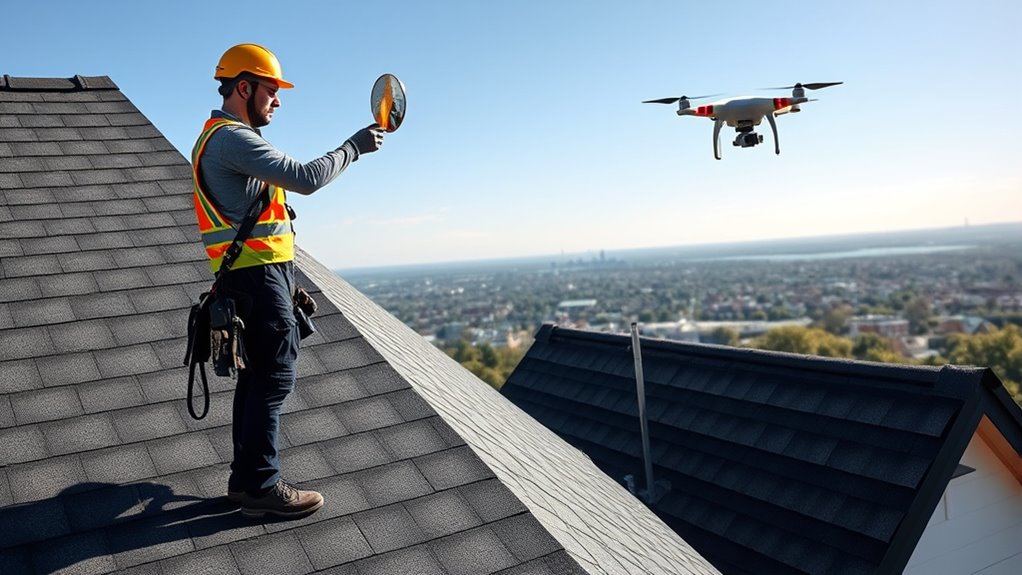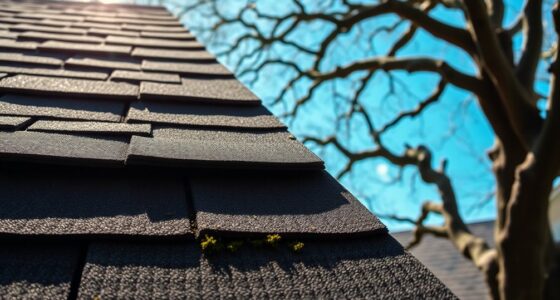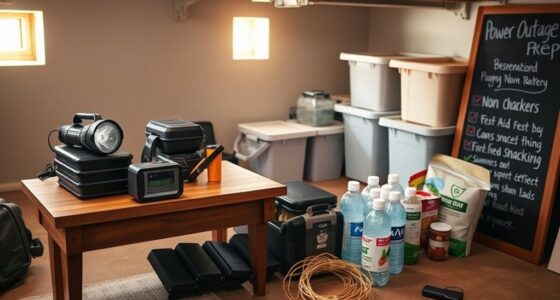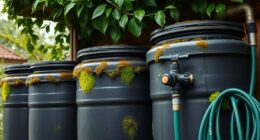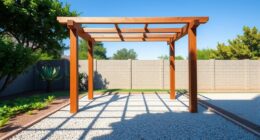To master roof inspections like a pro, use a blend of tech and hands-on checks. Deploy drones for detailed overhead views that capture hard-to-see damage safely and quickly. Incorporate infrared imaging to spot hidden water leaks and moisture issues early. Don’t forget the manual touch and feel — examining shingles for damage and inspecting flashing for rust or gaps. Combining these tricks guarantees a thorough inspection; keep going to uncover more expert strategies.
Key Takeaways
- Utilize drone technology for comprehensive, high-resolution roof imaging from safe distances.
- Incorporate infrared thermal imaging to detect hidden moisture and water damage early.
- Perform manual touch and feel inspections to identify subtle or structural issues missed visually.
- Follow safety guidelines and local regulations to ensure safe and effective inspection practices.
- Combine visual, thermal, and manual assessments for a thorough, accurate roof evaluation.
Using Drone Technology for Detailed Roof Surveys
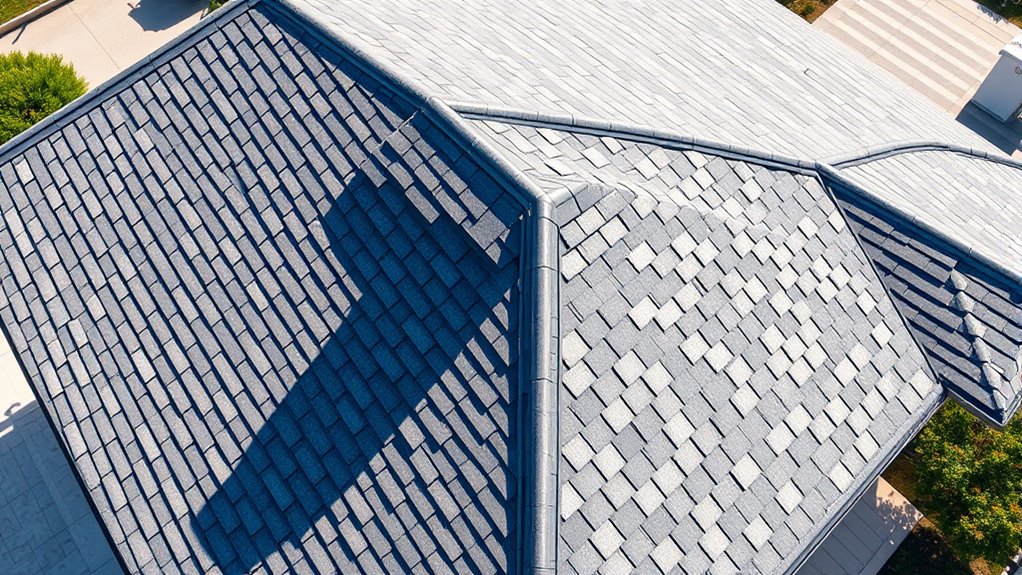
Drones have revolutionized roof inspections by allowing you to capture detailed images and videos from angles that were previously difficult or dangerous to access. With aerial photography, you can quickly survey the entire roof, identifying issues like damaged shingles, loose flashing, or debris buildup. Using a drone enhances safety by eliminating the need for ladders or scaffolding, reducing fall risks. Plus, drones provide high-resolution visuals that enable precise assessments without disturbing your property. Guarantee drone safety by following local regulations, maintaining line of sight, and flying at appropriate heights. This technology streamlines inspections, saving you time and effort while delivering extensive views that traditional methods might miss. Overall, drone-assisted roof surveys are a game-changer for accuracy and safety. Incorporating proper drone operation techniques ensures optimal results and compliance with safety standards.
Employing Infrared Imaging to Detect Hidden Water Damage
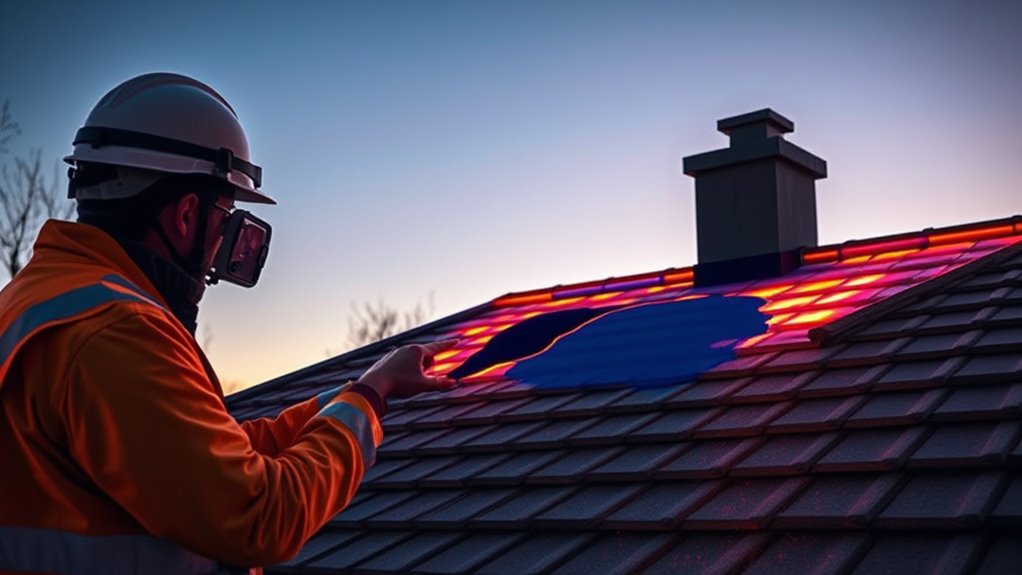
Infrared imaging has become an essential tool for detecting hidden water damage that often goes unnoticed during standard inspections. By capturing thermal anomalies, you can identify areas where moisture intrusion has occurred, even if they show no visible signs. Water leaks and moisture buildup change the heat pattern of roofing materials, creating distinct thermal signatures. This allows you to pinpoint trouble spots beneath the surface without destructive testing. Infrared cameras reveal temperature differences caused by trapped moisture, helping you catch problems early before they escalate. Using this technology, you gain a clear picture of hidden water damage, saving time and money on costly repairs. Overall, infrared imaging provides a non-invasive, accurate method to detect moisture intrusion that might otherwise remain concealed.
Conducting Manual Touch and Feel Inspections for Structural Weaknesses
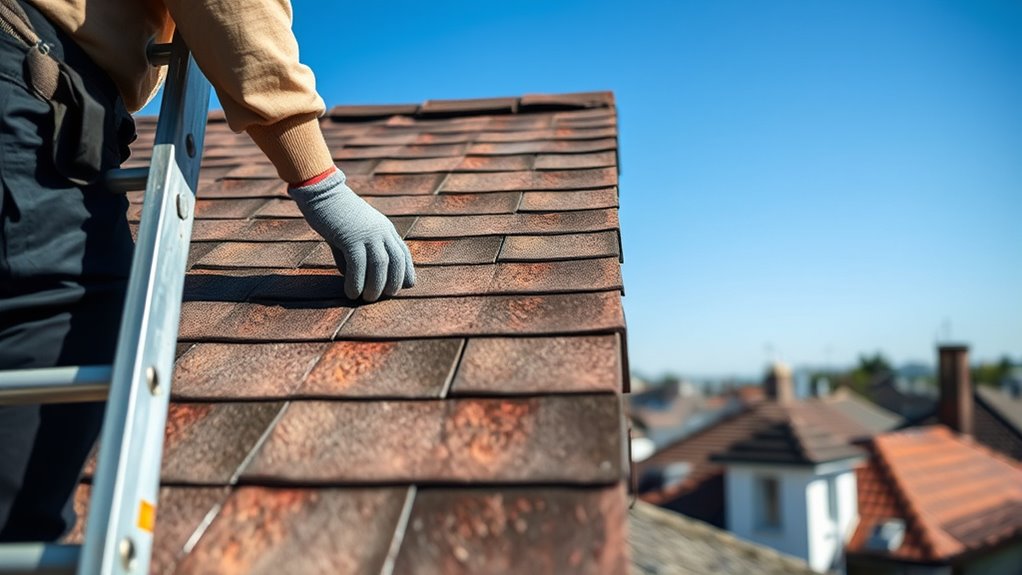
While visual inspections are essential, nothing replaces the hands-on approach of conducting manual touch and feel inspections to identify structural weaknesses. By physically examining your roof, you can detect subtle issues like compromised shingle integrity or deteriorated flashing condition that may not be visible. Run your hand over the shingles to feel for softness, looseness, or missing granules. Check the flashing around vents and chimneys for rust or gaps. Pay attention to areas that feel hollow or spongy, indicating underlying damage. Suction power can help remove debris from hard-to-reach spots, ensuring a thorough inspection.
Frequently Asked Questions
How Often Should I Schedule a Professional Roof Inspection?
You should schedule a professional roof inspection at least once a year to catch any damage early. Seasonal scheduling is smart, especially after harsh weather or storms, to guarantee your roof stays in top shape. Depending on your roof’s age and material, more frequent inspections might be needed. Regular inspections help prevent costly repairs and extend your roof’s life, giving you peace of mind year-round.
What Signs Indicate Immediate Roof Repair Is Necessary?
Imagine you notice water stains on your ceiling after a storm. That’s a clear sign you need immediate roof repair. Look for shingle deterioration, like curling or missing shingles, and flashing damage around vents or chimneys. These issues can lead to leaks and structural damage if ignored. Addressing these signs promptly prevents costly repairs and keeps your home protected. Regular inspections help catch these problems early before they worsen.
Can Roof Inspections Prevent Costly Future Damages?
Regular roof inspections help you catch minor issues early, preventing costly future damages. By staying on top of roof maintenance, you can identify leaks or damaged shingles before they worsen. This proactive approach often supports insurance claims, making repairs more manageable and less expensive. Skipping inspections risks overlooking problems that lead to extensive damage, so scheduled evaluations are a smart investment to protect your home and save money long-term.
Are There Specific Weather Conditions That Affect Inspection Accuracy?
You might think weather patterns and seasonal effects wouldn’t impact a roof inspection, but they actually do. Rain, snow, and high winds can hide damage or create new issues, making inspections less accurate. Ironically, the worst weather for inspecting your roof is often the very weather that reveals its vulnerabilities. To get the clearest assessment, plan inspections during calm, dry days, avoiding seasonal extremes that skew results.
How Do Different Roofing Materials Influence Inspection Techniques?
Different roofing materials influence inspection techniques because each type has unique characteristics. For example, asphalt shingles require close-up inspection for granule loss, while metal roofs need checking for loose panels or corrosion. Your approach should adapt to these roofing material differences, focusing on specific signs of damage. You adjust your inspection technique variations based on material, ensuring thorough assessment and accurate detection of issues across different roof types.
Conclusion
By mastering these expert roof inspection tricks—like using drone technology, infrared imaging, and manual checks—you can catch issues early and save money. Did you know that 90% of roof leaks are hidden behind the scenes, making advanced tools essential? Incorporate these techniques into your routine to make certain your roof stays in top shape. Staying proactive not only boosts safety but also extends your roof’s lifespan, giving you peace of mind for years to come.
